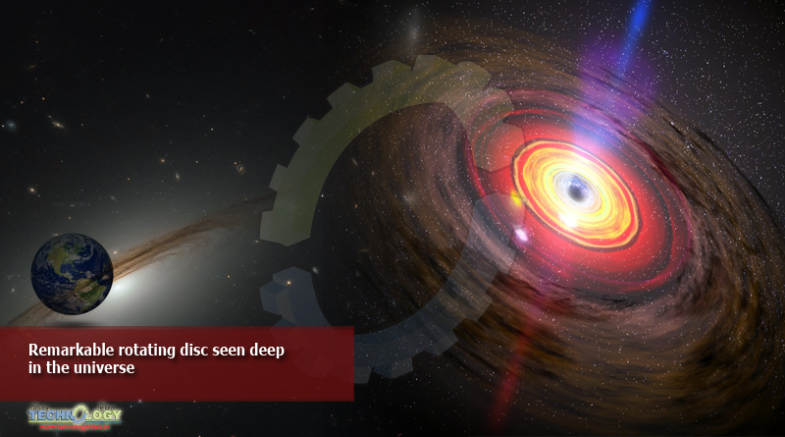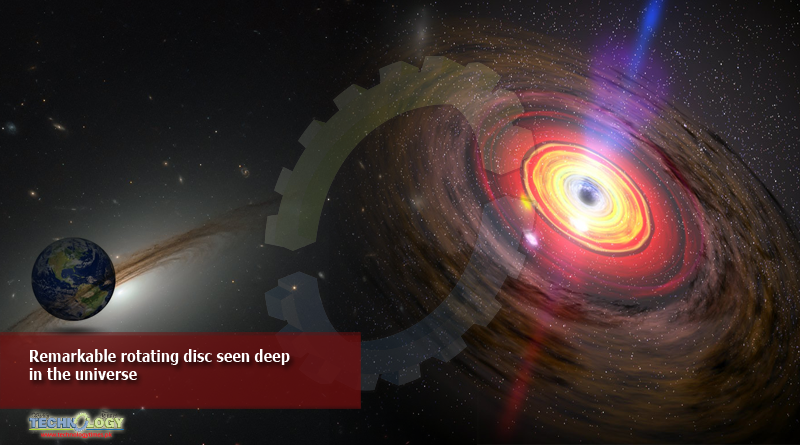A huge, rotating disc galaxy has been found deep in the universe and challenges our understanding of galaxies.

The disc was formed 1.5 billion years after the Big Bang, far earlier than predicted by our current understanding of galaxy formation. That such a galaxy could form so early in the history of the universe indicates that our traditional understanding – where galaxies build up in hierarchies, late in the history of the cosmos could be wrong.
The discovery could help answer the puzzle over one of the most profound questions in cosmology: how the universe changed from its bland, formless state at its very beginning to the complex and structured web of stars and galaxies that surround us today.
As well as being by far the earliest such disc ever spotted, it is also the most distant ever seen, and it is so far away that scientists are able to see it at a point when the universe was only a tenth of its current age. The object, nicknamed the Wolfe Disc, is spinning at 170 miles per second and has a mass 72 billion times that of our Sun.
Our current understanding of galaxies suggests that dark matter “halos” first develop, which then pull in surrounding gas and merge into bigger structures from which stars are formed. As time goes on, that leads to the growth of galaxies.
Comet flying towards Earth could be visible with the naked eye
Such a model suggests that as the gas falls into the rotating disc, it is heated up, leaving a spherical structure that has to cool before it can support the formation of a disc.
But the newly discovered galaxy contains a cold, dusty, rotating disc, despite the fact that it formed so early in the universe. That suggests that the gas could have been cool as it fell into the nascent galaxy, allowing for the disc to form quickly.
If that is the case, massive gas discs could form 2.5 billion years earlier than scientists had thought, according to the research published by Marcel Neeleman and colleagues in Nature.
Such “cold-mode accretion” would change our picture of when and how such disc galaxies – which includes our own Milky Way – are able to form. That in turn could change our comprehension of the universe, by allowing us a better picture of how matter is first assembled into the larger structures that surround us.
“We think the Wolfe Disk has grown primarily through the steady accretion of cold gas,” said J. Xavier Prochaska, of the University of California, Santa Cruz, and coauthor of the paper. “Still, one of the questions that remains is how to assemble such a large gas mass while maintaining a relatively stable, rotating disk.”
The finding is based only on one galaxy and so it is difficult to generalise from the findings, notes Alfred Tiley from the International Centre for Radio Astronomy Research, who did not work on the study, in an accompanying article. As such, similar observations of more galaxies are required before scientists can say that the newly discovered disc is representative of a broader trend, he writes.
“Nevertheless, Neeleman and colleagues’ findings will excite astronomers, and open up a new epoch of the Universe’s history for the study of early galaxy formation,” Dr Tiley concludes. The research, ‘A cold, massive, rotating disk galaxy 1.5 billion years after the Big Bang’
This news was originally posted on independent.co.com
